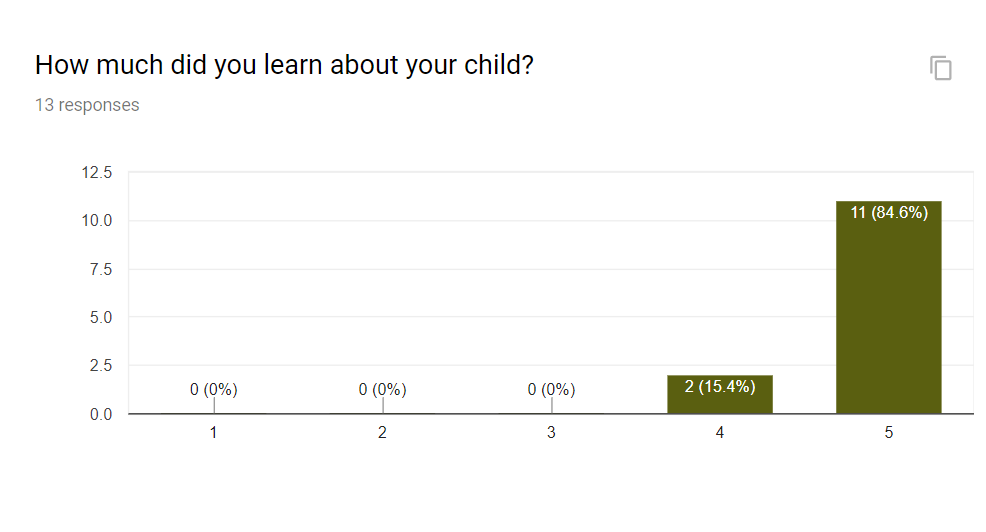A few years ago, I heard about student-led conferences at a professional development session with other teachers and over the last few years I have had the chance to experience them as a parent at my son’s school. I finally decided to take the plunge this year and give it a try with some assistance from my professional learning network and some awesome teachers and I am happy to report feedback from both parents and students was overwhelmingly positive. I thought I would write a blog post to share some resources as well as reflect on my experiences.
What are student-led conferences?
In the past I have had students lead conferences by having students talk about what they do well, what they want to improve and then I add to their comments. These are often called student-led conferences, however, generally they are still one-on-one interviews with parents in the room. The student-led conferences I tried this year and that I am speaking about in this blog post were very different.
With student-led conferences I am speaking about, one of the biggest differences is that I had up to 3 sets of parents and students in the room at one time for approximately 30-minute interviews. Students were completely responsible for leading the interview and I acted more as a facilitator. Students must attend the conference in order to it to take place. The focus really is more on the learning and sharing than the physical report card. Parents are much more active participants in these types of conferences. Here is a short video that might assist you to help you see what I am describing and that is useful to get a real sense of how student conferences operate.
Preparing for Student-led Conferences
Prior to starting student-led conferences there is a lot of preparation, particularly with younger primary students to ensure they are ready for the big day. I reached out to a friend and colleague of mine, Janina Navarro who has ran these types of interviews before. She Skyped with me to answer my questions and provided me with a letter to share with parents.
I started the process of preparation about a week and half before interviews and I came up with some stations that I wanted to include. With older students, I would actually co-construct these centres. I decided on 5 centres that illustrated a variety of academic areas. Station one was to showcase the podcasts that students created called, Me in a Minute. Station two was our blog centre to share student blogs and encouraged parents to either comment on their child’s blog or co-create a post together. Station three was a silent reading station where I had students read a book at their reading level with their parents, while providing prompts for parents to ask. Station four consisted of a social studies/art station to showcase the work we had completed with our social studies teacher around some Indigenous Art. The final station was a portfolio goal-setting station where students went through their portfolios, completing a reflection piece on what they were proud of and coming up with a goal for the next term.
Each day in class I went through a new station with the students, having them practise in pairs: one student acted as parent and the other student acted as the student. I created a package for students in case they forgot on the day and to help remind them of what to say. My favourite part was an extension activity at the goal-setting station, where I asked parents to write something they were proud of their child on a sticky note. We posted these on a large piece of chart paper for students to read. Students were so excited to see what parents had read. I was particularly impressed at comments which focused on a love of learning and character education as opposed to grades. I have since added the chart paper to our prayer centre in the classroom, so students can continue to see the home/school connection and feel that they are supported by their parent(s).
Student-led Conferences: The Big Day!
On the conference day things ran extremely well! I had no more than 3 parents in the room which I felt was perfect amount for privacy. Students were encouraged prior to the day to be at different stations so they had privacy with their parents when discussing their learning. Sometimes some of the interviews overlapped so I would probably try to adhere more strictly the time next time or I would ajust the schedule of interviews having them run 15 minutes apart. I also think that having 4 stations instead of 5 would have been adequate.
I was really impressed at how students took pride and leadership, they seemed to really enjoy the experience of student-led conferences. Some of my students were very nervous and I helped them out to remind them of what to do. I was also really impressed by the parents and how they engaged with their children. It was truly beautiful to see them talking about learning and communicating with their children in authentic ways. I made it a priority to ensure that I touched-base with each parent to talk one on one and answer any questions they had, which I feel is critical to the success of student-led conferences.
Reflections and Feedback and Next Steps
As this was the first time I had experimented with student-led conferences, I created a Google Form for parents to provide feedback. I created a QR code and had an iPad available for parents to complete before they left. The feedback, as you can see below was overwhelmingly positive! I will definitely continue with student-led conferences from now on.
What have your experience been like? Do you have any tips? I would love to hear other experiences about student-led conferences.







